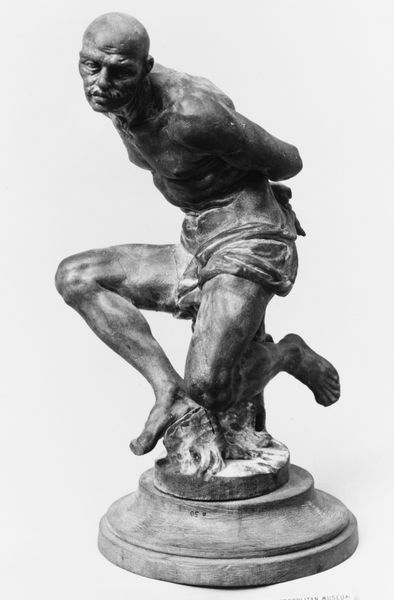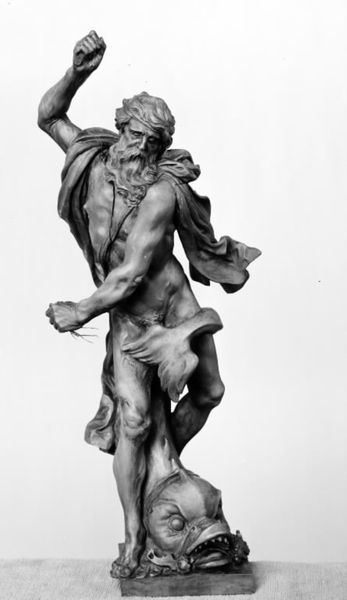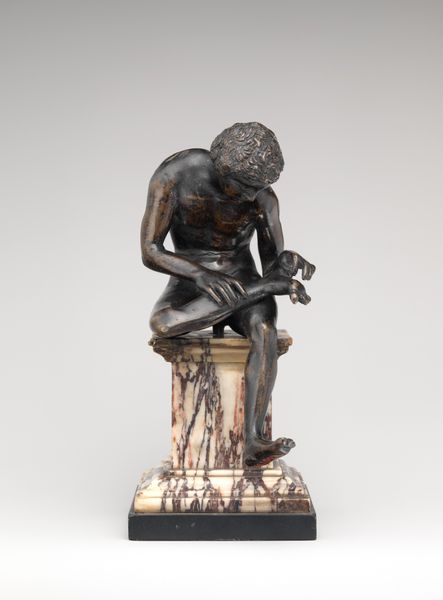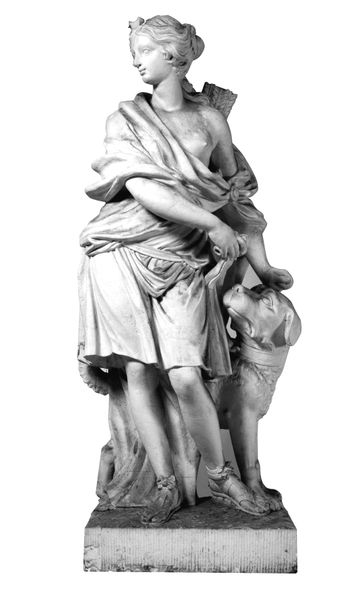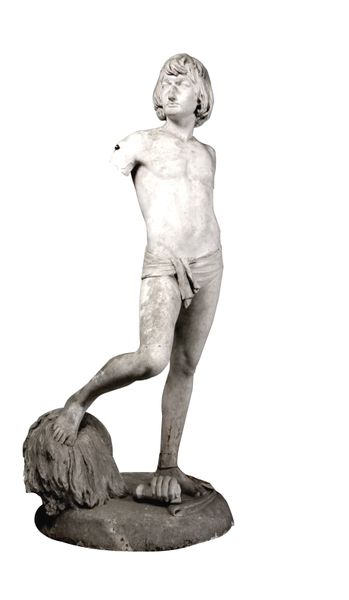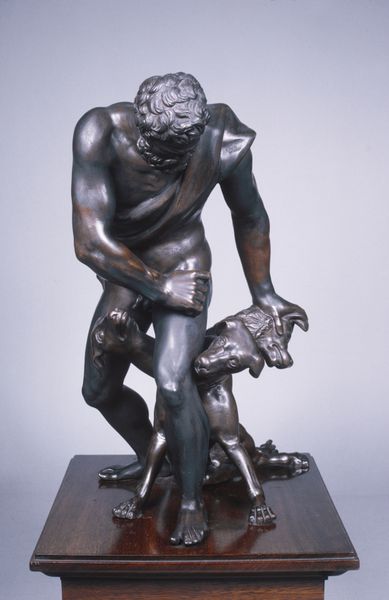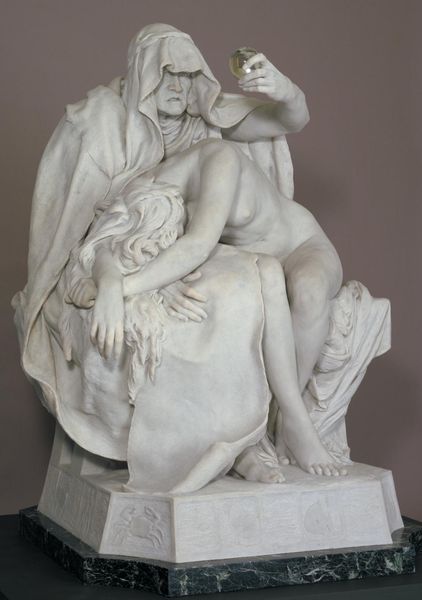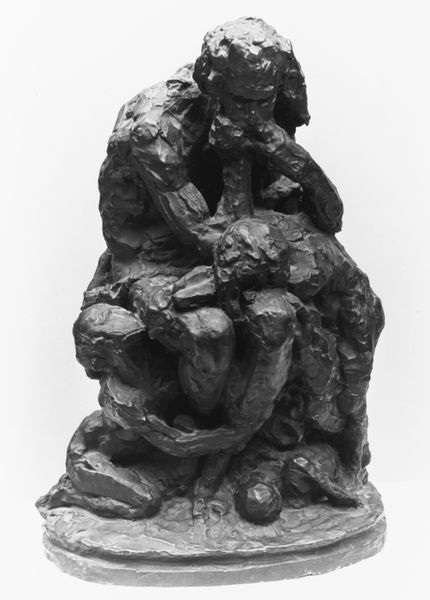
sculpture, marble
#
portrait
#
neoclacissism
#
the-ancients
#
sculpture
#
figuration
#
sculpture
#
marble
Dimensions: 69.5 cm (height) x 55 cm (width) x 80 cm (depth) (Netto)
Curator: What a striking piece! We are looking at Hermann Ernst Freund’s marble sculpture, "Thor, sitting, leaning on his hammer," created between 1828 and 1829. Editor: My first thought is that it feels… introspective. Mighty Thor, the god of thunder, looks like he’s contemplating his grocery list more than epic battles! The pose is so casual, almost melancholic. Curator: Absolutely. Freund was working within a Neoclassical style, so you see that idealized form, referencing classical sculpture. But he’s also tapping into a growing interest in Norse mythology, part of a broader cultural fascination with national origins. The Ancients movement also explored the themes of mythology and Nordic folklore. Editor: It's interesting how the symbols interact. We instantly recognize the hammer as a symbol of power, but here, it looks almost like a prop. It undermines that image of Thor as an active, virile god, doesn't it? He isn’t wielding his power, but leaning wearily on it. Curator: Precisely. The hammer isn’t actively in use. In psychology, we can also think of this passivity and seated, weighted stance of a great power potentially referring to concepts of latent power or contained emotion. This symbol invites meditation on Norse beliefs and heroic identity through both national and psycho-cultural lenses. Editor: The marble itself also plays a role. The smoothness, the way the light catches it, elevates this figure from mere brute strength to something almost refined, more contemplative. What would the sculpture's reception have been like at the time? Curator: Well, it’s worth remembering that museums were still in their formative period then, acting as powerful spaces for nation-building through art. So, displaying Thor in this way would certainly reinforce a sense of shared Nordic heritage and national pride, though perhaps prompting varying interpretations as the old tales were reconsidered for modern identities. Editor: It’s a far cry from the Marvel superhero, isn’t it? It speaks volumes about how cultural perceptions change over time and the role art plays in that process. Curator: Indeed. It is a fascinating work with which Freund successfully manages to capture the shift to valuing thoughtfulness over pure strength. Editor: It's an impressive and very human interpretation of a mythical figure!
Comments
No comments
Be the first to comment and join the conversation on the ultimate creative platform.

